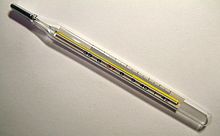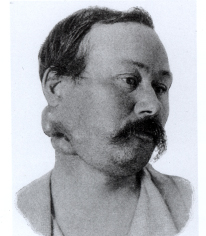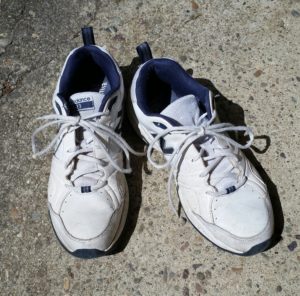 This was written in 2009, but it discusses the amazing possibility of infections with high fever treating and curing cancer. This method, originally discovered by William Coley in the 1890s, used a bacterial extract (named Coley's toxins or Coley toxins) to cause an infection in the person with cancer. Try to read the whole fascinating article.From American Scientist:
This was written in 2009, but it discusses the amazing possibility of infections with high fever treating and curing cancer. This method, originally discovered by William Coley in the 1890s, used a bacterial extract (named Coley's toxins or Coley toxins) to cause an infection in the person with cancer. Try to read the whole fascinating article.From American Scientist:
Healing Heat: Harnessing Infection to Fight Cancer
Conventional wisdom long held that the human immune system was no match for cancer. Born of native cells, the logic went, cancer fooled the immune system into concluding it was harmless. Thus protected from attack, cancer easily thrived until its host died.
A deeper understanding of our biological defenses has changed that. The human immune system does battle cancer. But we could better optimize our defenses to fend off malignant disease. That’s clear from cancer treatments attempted in New York City and Germany as early as the 19th century. Those experiments and other undervalued evidence from the medical literature suggest that acute infection—in contrast to chronic infection, which sometimes causes cancer—can help a body fight tumors.
It’s not the pathogens that do the good work. But the way our bodies respond to the pathogens is key. Infection events, especially those that produce fever, appear to shift the innate human immune system into higher gear. That ultimately improves the performance of crucial biological machinery in the adaptive immune system. This lesson comes, partly, from doctors who risked making patients sicker to try to make them better.
Medicine back then offered little more than amputation and morphine to cancer patients... Shocked by his ineffectiveness, Coley dove into hospital records and the medical literature for clues to how to help more. He found about 90 sarcoma case reports. About half contained follow-up histories....In his literature search,William Coley found more than 40 cases of disappearance of malignancies during an erysipelas attack.
In April 1891 an Italian immigrant, Mr. Zola, presented at New York Hospital with a large sarcoma tumor in his neck and an egg-sized metastasis in his right tonsil. He had been operated on twice before but was in hopeless condition. He could hardly speak or swallow and was unable to eat solid food. His life expectancy was, at the very most, a few months. He had nothing to lose by undergoing an experimental treatment.
 Mr. Zola with large sarcoma in the neck. Credit: Discover magazine.
Mr. Zola with large sarcoma in the neck. Credit: Discover magazine.
Since erysipelas was so hazardous, the hospital was reluctant to host Coley’s experiment, so it was performed in a private apartment. Colleagues at the College of Physicians and Surgeons, now part of Columbia University, prepared the bacteria. Three applications were delivered over three weeks, with minor success...Via a friend, Coley obtained fresh and potent bacteria culture from the leading German bacteriologist, Robert Koch. That fall, he again treated Zola, whose temperature that time rose above 104 degrees, with nausea, vomiting and severe pain. The infection almost killed him, but within two weeks, the neck tumor was not observable. The tonsil tumor stopped growing. Zola was in excellent health when Coley saw him four years later.
During the following two years Coley attempted to infect 12 patients who had inoperable cancer. He failed to induce a full-blown infection in four and succeeded in eight. All eight responded. Six had partial tumor remissions. Two showed full remission. But two patients died from infection. So Coley abandoned living cultures and turned toward what today we would call a bacterial extract.
In January 1893 Coley administered for the first time one variant of what today are still called “Coley’s toxins.” It was a heat-sterilized, combined culture of S. pyogenes and S. marcescens bacteria administered by injection. The patient was a 16-year-old boy with a large inoperable abdominal tumor, a malignant sarcoma. After receiving increasing doses over 10 weeks, the boy developed symptoms mimicking those of a heavy erysipelas infection: chills, headache, fever, local redness and swelling at injection sites. The tumor shrank by 80 percent. Coley kept in touch with his patient, who remained cancer-free for more than 20 years.
At the beginning of the 20th century radiation treatment came on the cancer therapy scene. This new procedure captured nearly the full attention of the oncology community due to its immediately visible effects. One could now, it seemed, x ray away tumors. Within the medical mainstream, interest in Coley’s methods faded. Still, some physicians did try to test Coley’s treatment.
Coley, throughout his 40-plus-year career, treated hundreds with multiple versions of his toxin. He never achieved a clear-cut, uniform result. Some patients responded...A five-year survival rate of zero after radiation and 38 percent after Coley’s treatments merited deeper scrutiny.
Helen Coley Nauts, Coley’s daughter, meticulously reexamined her father’s clinical cases after his death. This was not easy. Undoubtedly a man of determination, Coley was not a methodical scientist. His patient records were a mess, he treated different patients for different time periods and his bacterial extracts, over time, were inconsistently made. Coley Nauts counted 15 different preparations. Eleven of them, she concluded, were not potent enough to have a strong effect.
Coley Nauts determined that her father had treated several hundred patients by the time he died in 1936, many of whom had received radiation and sometimes surgery as well. To estimate the overall success of extracts, the analysis should be restricted to patients with inoperable cancer and treated by toxin alone. In another review from 1994, immunologist and oncology researcher Charles Starnes identified 170 such patients with adequate medical records (121 with some form of sarcoma, 43 with carcinoma and myeloma, and 6 with melanoma). The remission rate among them was 64 percent; the five-year survival rate was more than 44 percent.
According to the analyses of Coley Nauts and Starnes, treatment success correlated with length of therapy and the fevers induced by the toxins. Higher was better. This correlation was reported among several other observations but without emphasis or any explanation by the authors.
Only a few uncoordinated attempts to apply Coley’s ideas were pursued from mid-century on....Well-controlled studies of bacterial-extract cancer treatment that incorporate all the lessons from the retrospective analysis of Coley’s and other treatments have not been pursued since. But medical case studies, cancer epidemiology and our more precise understanding of immunology make a strong case that they should.
Spontaneous regression or remission is the partial or complete disappearance of an untreated malignant tumor or a tumor treated with a therapy considered inadequate to exert significant influence. It sounds like fantasy, but about 1,000 case studies in the medical literature during the past century detail spontaneous regression from cancer. Surely more have occurred. And there’s a pattern to some of the cases. A prior fever was recorded in 25 to 80 percent of documented cases of spontaneous regression of cancer.
It is not true, as Coley believed of S. pyogenes, that all these pathogens produce some cagey anti-cancerous substance...Much more likely is that the sequence of immune reactions triggered by the infections was the same...Cancer cells can carry hundreds of mutations that distinguish them from healthy cells. But the immune system often remains in an “observer” state in their presence rather than engaging in battle as it does against bacterial or viral infections. The reason for this incomplete immune response is a long-standing puzzle in cancer immunology. William Coley’s experiments may help today’s scientists solve it.
There may be prophylactic potential here as well. Epidemiological studies suggest that a personal history that includes several infections with fever sometimes significantly reduces the likelihood a person will develop cancer later (see What the Literature Says). One potential explanation is that feverish infections reduce would-be malignant cells. If that’s true, the implications are profound.

 This recent scientific (and yes, technical) article discusses the tantalizing promise of treating cancer, especially melanoma, with infections and certain vaccines. Much discussion of how two vaccines that are already out there may prevent some cancers such as melanoma and leukemia (vaccination with Bacille Calmette-Guerin (BCG) of newborns and vaccination with the yellow fever 17D vaccine of adults).This recent article is a further development on what was discussed in the last post (Injecting a person with a bacterial extract - called Coley's toxins or Coley toxins - to cause an infection, and so treat cancer). From BioMed Central:
This recent scientific (and yes, technical) article discusses the tantalizing promise of treating cancer, especially melanoma, with infections and certain vaccines. Much discussion of how two vaccines that are already out there may prevent some cancers such as melanoma and leukemia (vaccination with Bacille Calmette-Guerin (BCG) of newborns and vaccination with the yellow fever 17D vaccine of adults).This recent article is a further development on what was discussed in the last post (Injecting a person with a bacterial extract - called Coley's toxins or Coley toxins - to cause an infection, and so treat cancer). From BioMed Central: Mr. Zola with large sarcoma in the neck. Credit: Discover magazine.
Mr. Zola with large sarcoma in the neck. Credit: Discover magazine. Lasting benefits from lifestyle changes (Mediterranean diet and exercise). From Science Daily:
Lasting benefits from lifestyle changes (Mediterranean diet and exercise). From Science Daily: